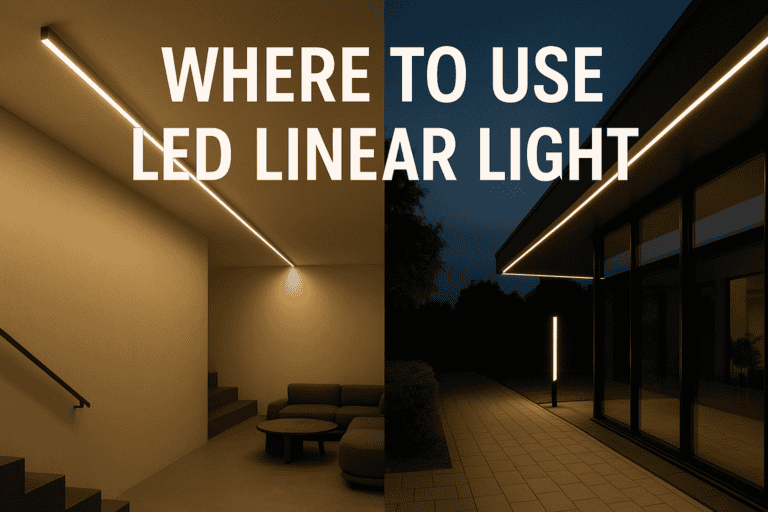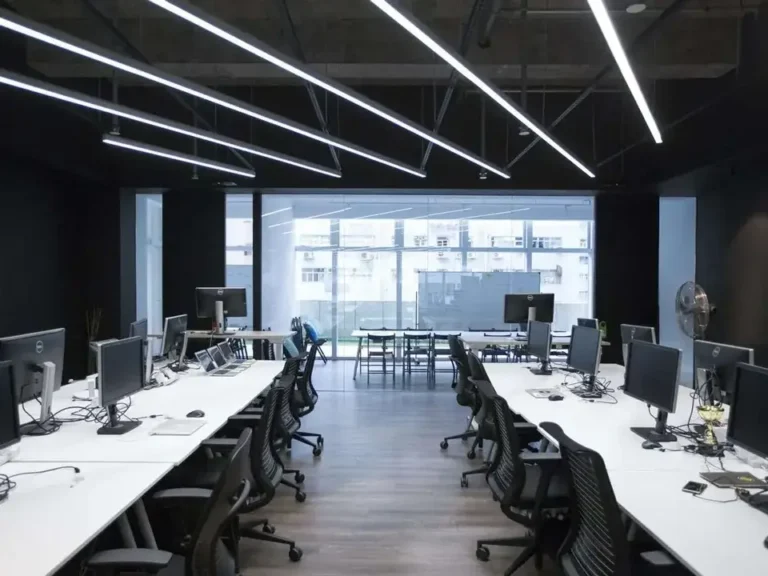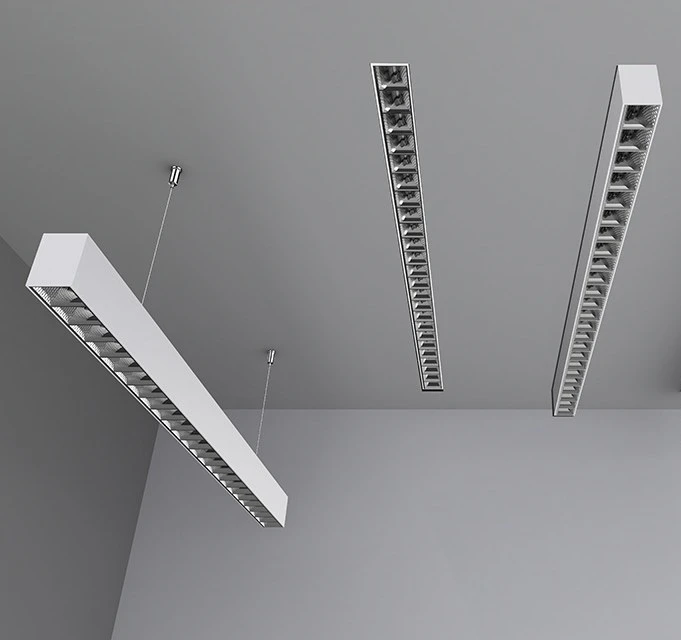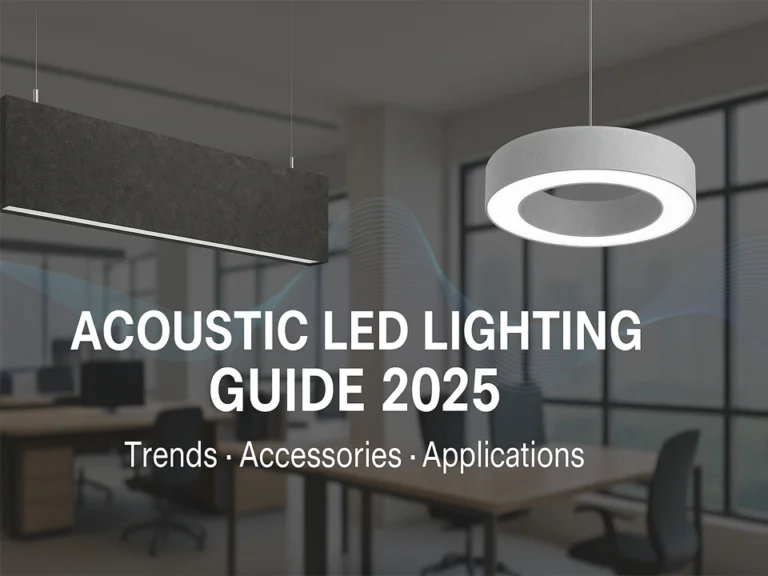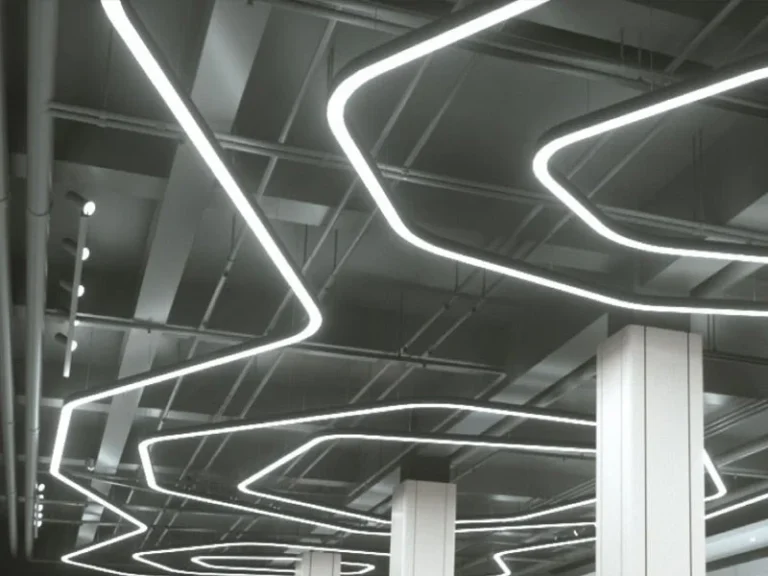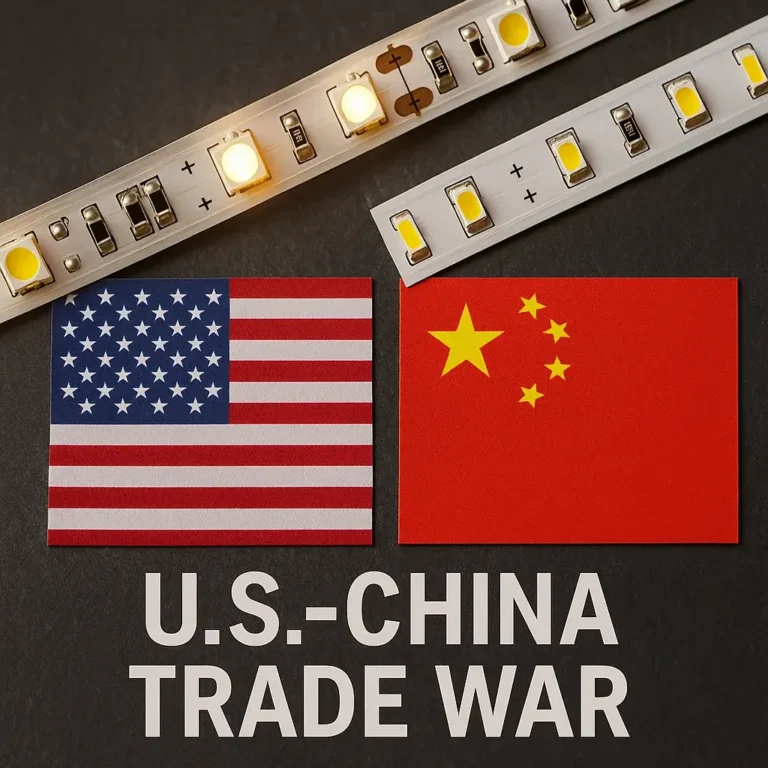As architecture evolves toward minimalism and clean visual lines, lighting design is stepping up to play a more creative and functional role. Among all options, linear LED lighting has become a key design tool—no longer limited to straight lines or standard layouts. With advancements in LED efficiency, form factor, and profile engineering, today’s linear fixtures can bend, twist, and connect seamlessly from floor to ceiling, around corners, and across open-plan spaces. Designers and engineers now have the freedom to create continuous lines of light that follow the flow of architecture rather than interrupt it. Whether in commercial offices, high-end retail, or modern hospitality settings, linear lighting provides both visual harmony and design flexibility—setting the stage for this guide on types, applications, and key considerations in choosing the right linear lighting solution.
What Is LED Linear Lighting and Why It’s Gaining Popularity
LED linear lighting refers to rigid lighting fixtures that use LED technology to produce uniform, elongated lines of light. Typically built with aluminum housings and diffusers, these fixtures are available in various lengths, wattages, and mounting styles—making them highly versatile for architectural and commercial use. Unlike traditional point or panel lights, linear lights offer continuous, seamless illumination with a sleek, minimal appearance.
The growing popularity of LED linear lighting is driven by its unique ability to blend form and function. Designers and engineers favor these lights for their clean visual lines, high energy efficiency, and precise light distribution. From open-plan offices to retail ceilings and hotel corridors, linear fixtures enhance both visual comfort and aesthetic consistency. In addition, many modern systems support dimming, modular linking, and integration with smart controls, allowing for both performance and flexibility. As businesses seek lighting solutions that are professional, scalable, and visually refined, LED linear lighting continues to rise as a preferred choice in contemporary lighting design.
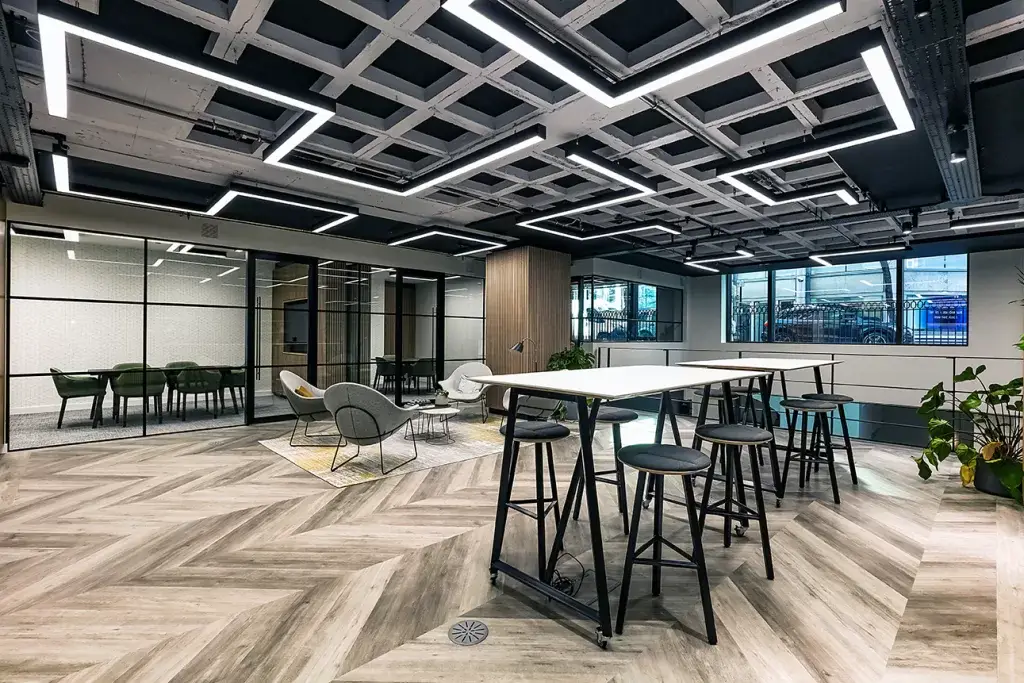
Main Classifications of LED Linear Lighting
LED linear lighting comes in a wide variety of types, allowing designers and engineers to tailor lighting plans to both functional and aesthetic requirements. The following are five key ways to classify rigid LED linear fixtures.
By Mounting Method
Rigid LED linear lights offer multiple mounting options to suit different architectural needs and visual effects. These methods determine how the fixture integrates with the space. Common mounting styles include:
Recessed
Installed flush into ceilings, walls, or floors for a clean, trimless look. Ideal for offices, galleries, and modern interiors where minimalism is key.
Surface-Mounted
Mounted directly onto flat surfaces—such as ceilings, walls, or furniture—without requiring cut-outs. This is commonly used in renovations or concrete ceilings.
Suspended (Pendant)
Hanging from the ceiling with cables or rods, suspended lights provide balanced direct lighting and are popular in commercial, hospitality, and co-working spaces.
Wall-Mounted
Installed horizontally or vertically on walls, often used as accent lighting, corridor lighting, or to highlight architectural elements.
Corner-Mounted
Designed to fit neatly into 90° intersections—such as ceiling-to-wall or wall-to-floor—providing continuous light lines across surfaces.
Track / Magnetic Mounted
Modular systems where linear fixtures are magnetically or mechanically attached to a rail, allowing flexible repositioning. Ideal for retail or display lighting.
From Ceiling to Wall to Floor
A continuous installation method where the linear light extends seamlessly from the ceiling down the wall and onto the floor. This technique emphasizes architectural flow and is commonly used in high-end commercial spaces to highlight spatial geometry or create visual pathways.

By Light Distribution Direction
The way light is emitted from a linear fixture determines its effect on space and atmosphere:
Direct Lighting: Emits light downward for functional, task-oriented illumination—common in workspaces and classrooms.
Indirect Lighting: Throws light upward to reflect off the ceiling, creating soft, ambient illumination.
Direct + Indirect: Dual-direction fixtures offering both downward and upward light, balancing visual comfort and efficiency.
Side-Emitting / Wall Washing: Projects light horizontally to highlight vertical surfaces—used in galleries, lobbies, or feature walls.
Asymmetric Distribution: Light is angled to one side, useful for display lighting or highlighting architectural details.
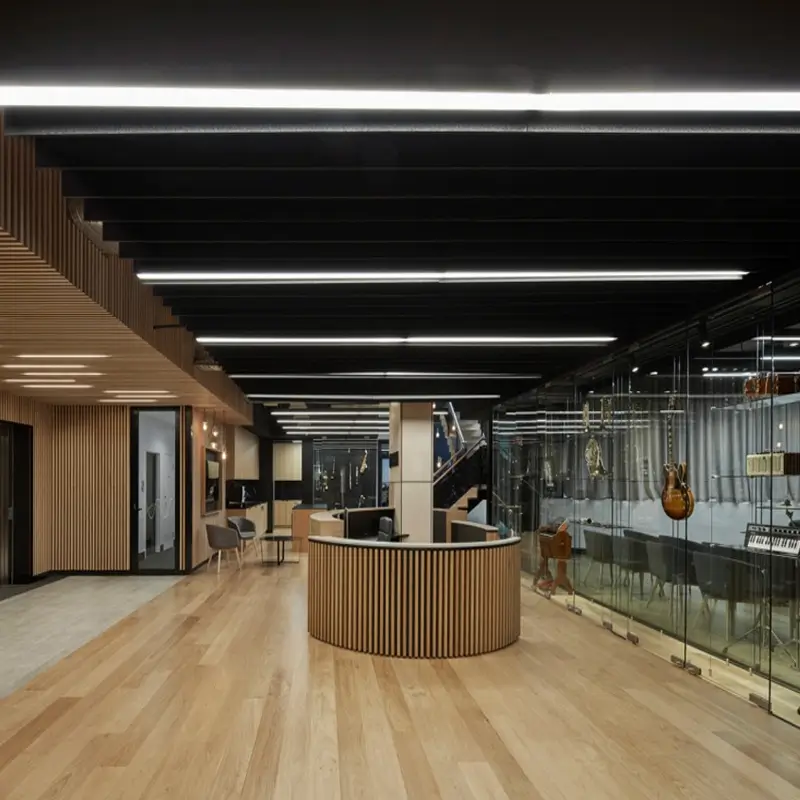
Direct LED Linear Lighting
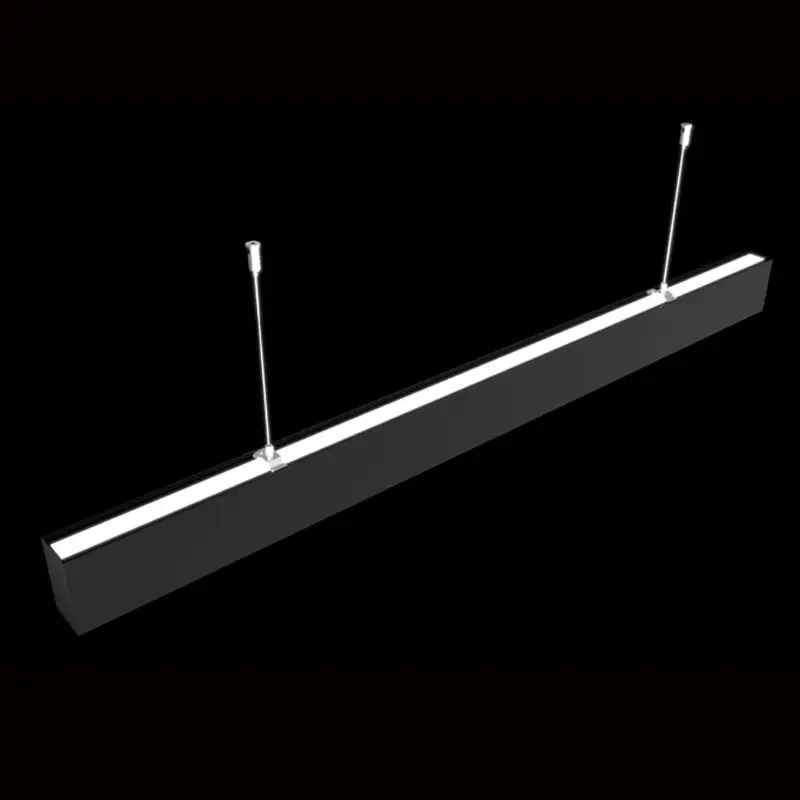
Indirect LED Linear Lighting

Dual-direct LED Linear Lighting
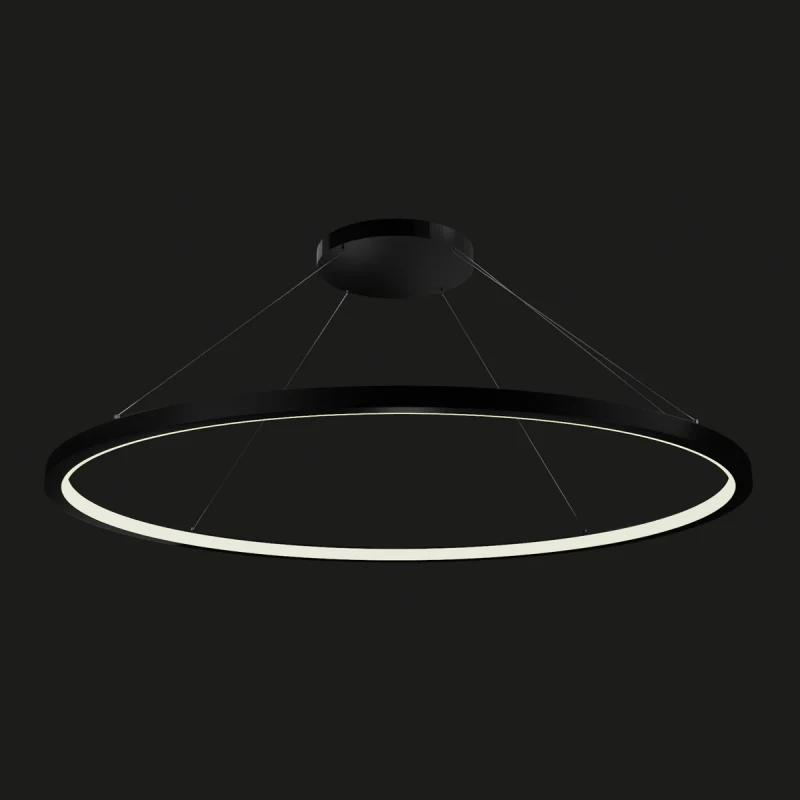
Side-Emitting LED Linear Lighting
By Shape and Profile Structure
Linear lights are no longer limited to straight bars—they can take on many geometric and custom forms:
Straight (Standard Linear): The classic rigid format, ideal for continuous rows and clean lines.
L-Shape / U-Shape: For wrapping corners, display cases, or furniture edges.
Zigzag-Shape / S-Shape: Used for decorative or architectural emphasis, especially in lobbies or creative spaces.
Curved and Round Shapes: Bending profiles allow for circular, arc, or oval installations—often seen in hospitality and high-end interiors.
Triangle / Square / Rectangle / Hexagon / Polygonal Shapes: Assembled from custom-cut rigid profiles, these shapes create visual rhythm or decorative ceiling features.
Frameless or Trimless Designs: Minimalist profiles that blend seamlessly into drywall or millwork.
Ultra-Slim / Wide-Body Profiles: Varying sizes to suit narrow spaces or high-output needs.
These shape options allow lighting designers to align fixture form with architectural intent, achieving both performance and aesthetics.
By Functionality
Modern linear lights are available with enhanced features such as dimming (0-10V, DALI), tunable white, RGB/RGBW effects, emergency backup, and flicker-free performance for sensitive environments.
By Use Scenario
Linear lighting can be categorized by target use: office task lighting, retail accent lighting, hotel ambient lighting, industrial high-lumen fixtures, and architectural highlights.
Application Scenarios of LED Linear Lighting
Office Lighting
In modern office spaces, recessed direct/indirect linear lights—typically 1200mm long and 30–40mm wide—are installed in continuous rows to provide uniform task lighting with UGR<19. These fixtures often use 4000K color temperature to maintain focus, and support DALI or 0–10V dimming. In collaborative areas, suspended linear pendants are used to create visual zoning while maintaining clean ceiling lines. The linear form factor helps reinforce the structured layout of open-plan workspaces.
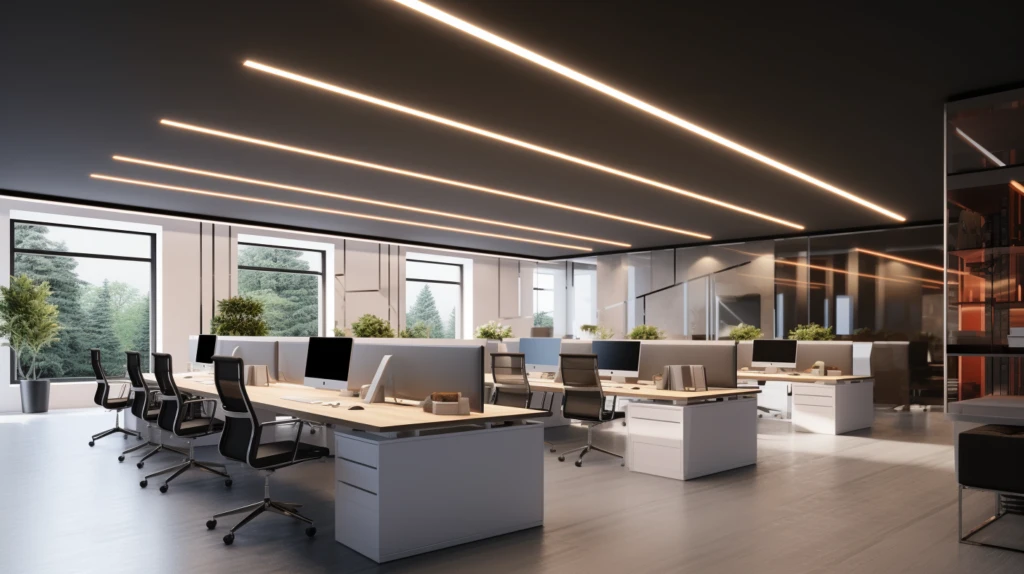
Retail Stores and Display Windows
Retail environments often utilize surface-mounted or suspended zigzag linear lights to create dynamic ceiling patterns above product aisles or display islands. These fixtures—usually 20–30mm wide—combine high CRI (>90) LEDs with 3000K warm light for flattering product illumination. In addition, wall-mounted matrix-style linear systems are installed as feature backdrops or light walls, delivering a soft side glow and creating brand atmosphere. Flexible dimming via 0–10V or smart control allows retailers to adjust lighting for promotions or window displays.
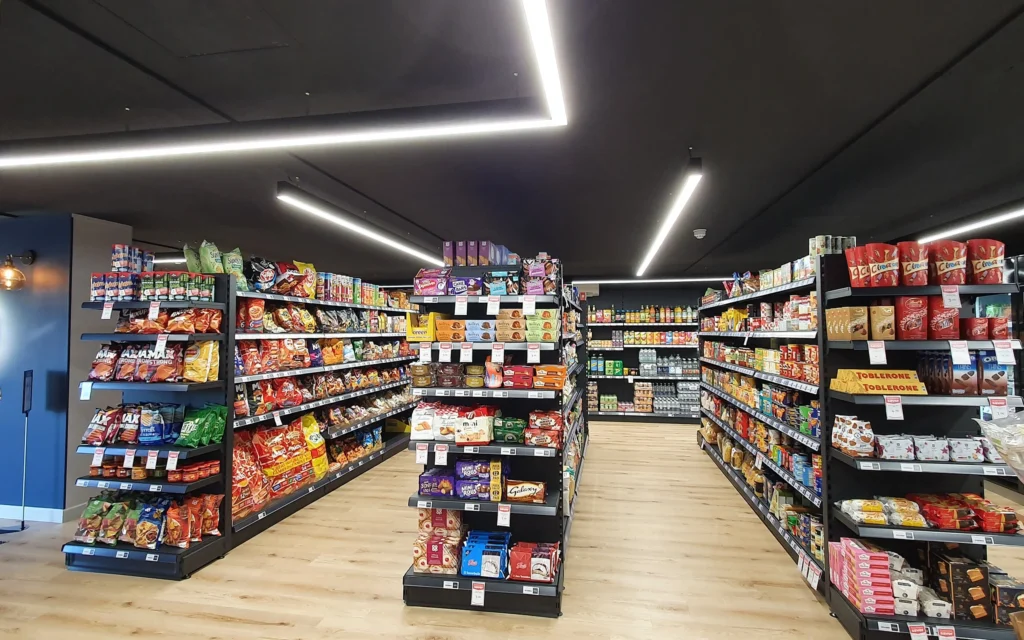
Hotel Lobby and Reception Areas
To achieve a sense of spatial flow, continuous “ceiling-to-wall-to-floor” linear lighting is used to outline architectural forms. These rigid profiles, often 25mm or 40mm wide, use frosted diffusers to create a smooth visual ribbon of light around reception counters or seating areas. Complementary curved or ring-shaped suspended linear lights are used above lounges to define visual zones. Most installations use 3000K warm white with DALI control for time-based dimming, enhancing atmosphere from day to night.
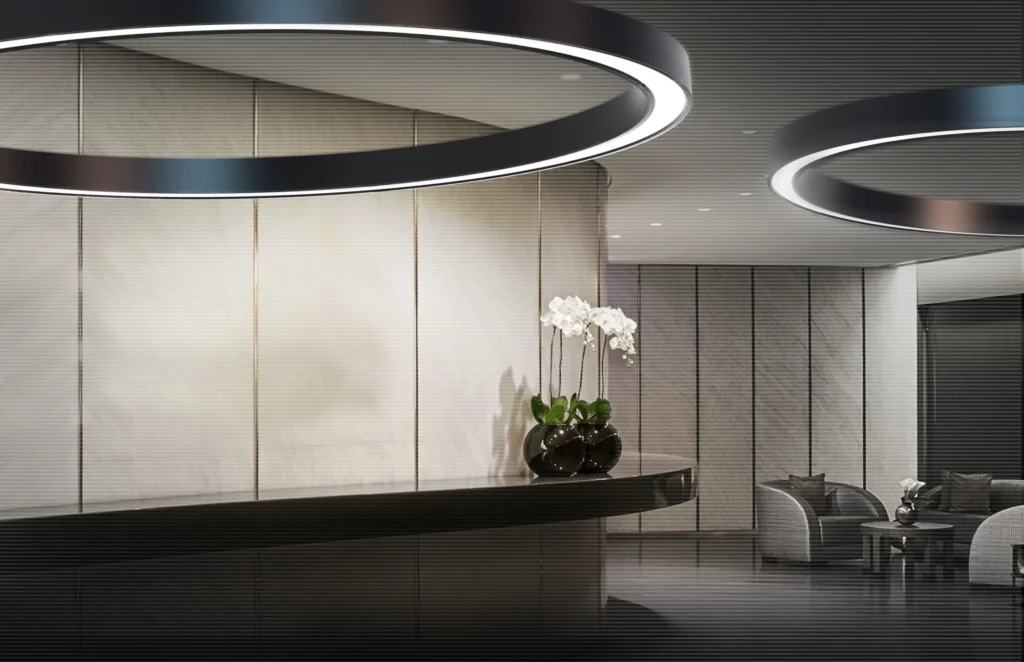
Healthcare and Senior Living Facilities
Wall-mounted indirect linear lights with asymmetric optics are used in patient corridors to reduce glare while maintaining adequate brightness. These fixtures are commonly 50mm wide, recessed or semi-surface mounted, and offer tunable white functionality (2700K–5000K) to support circadian rhythms. Along floor edges, ultra-slim skirting linear lights (12–15mm) are embedded to serve as low-level night guidance, often with PIR motion sensing and flicker-free constant current drivers to meet healthcare safety standards.
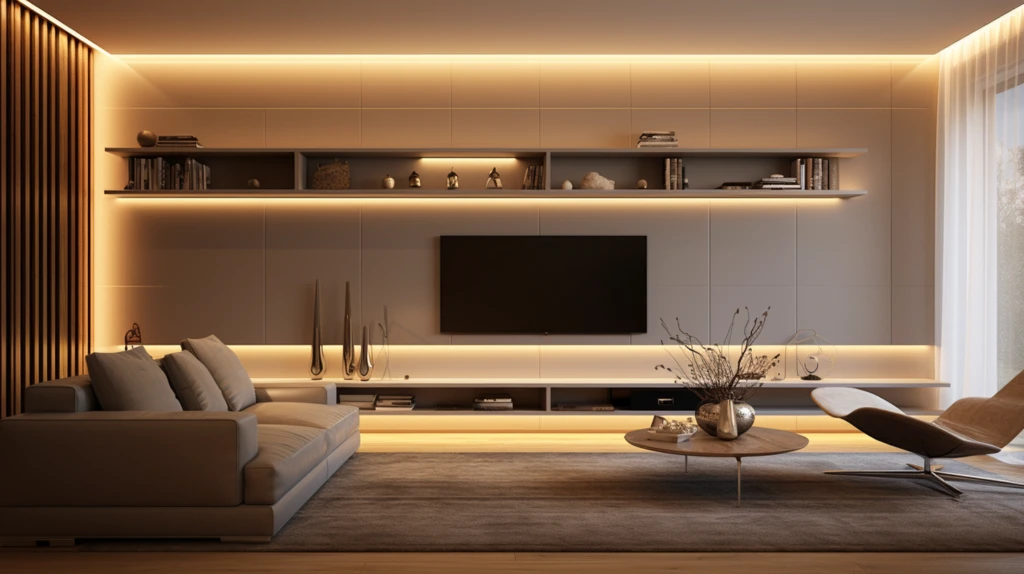
Educational Libraries and Study Areas
In learning environments, suspended direct/indirect linear lights are installed above long study tables, typically using 1200–1500mm fixtures with 3500K neutral light. To reduce acoustic reflection, some profiles are integrated with sound-absorbing panels. In ceiling grids, square or rectangular frame-style linear lights are recessed to create geometric lighting patterns. These systems often support PoE (Power over Ethernet) control, allowing central brightness and scheduling adjustments via the school’s IT network.
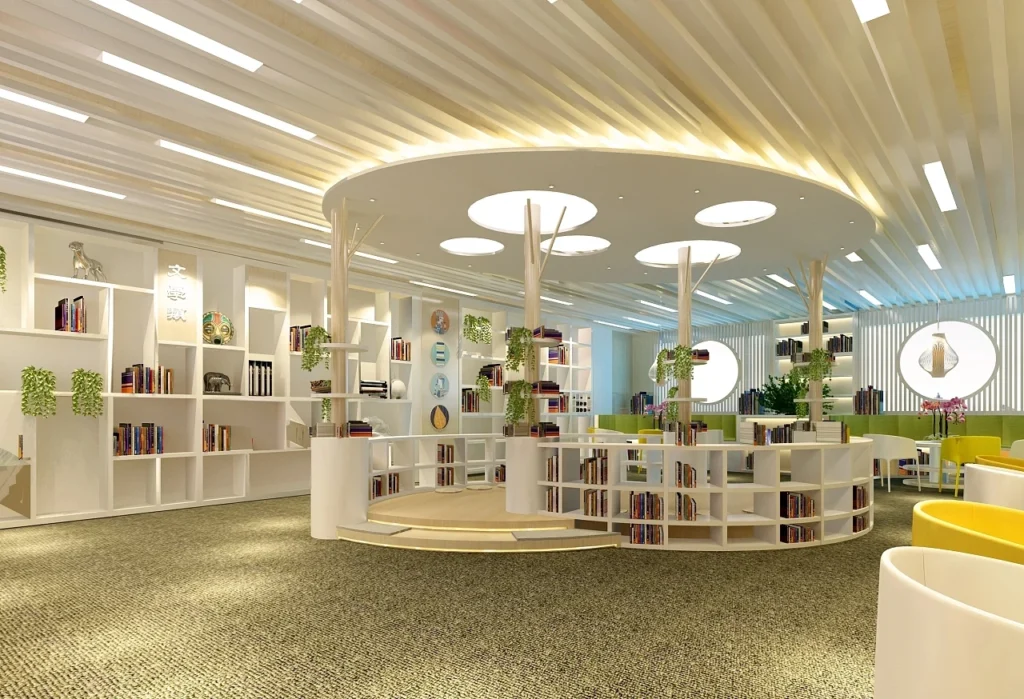
Modern Showrooms
In high-end showrooms such as car dealerships, furniture galleries, or tech experience centers, linear lighting plays a key role in enhancing spatial rhythm and product presentation. Recessed or suspended square frame linear lights—often in 600x600mm or 1200x1200mm modular sizes—are used to create a sense of structure above display areas. For visual layering, wall-integrated vertical linear strips with 2700K–3000K color temperature accent product backgrounds. Systems often feature 0–10V dimming and are paired with motion sensors or scene-control panels to adapt lighting to customer flow and time of day, creating a curated, immersive environment.

Advantages of Using LED Linear Lighting
Aesthetically Versatile – Shapes, Patterns, and Design Freedom
Unlike traditional fixtures, LED linear lights are available in a wide variety of shapes, profiles, and modular formats. Designers can use straight lines, zigzag forms, L-shapes, or polygonal frames to create unique ceiling layouts or geometric compositions. Whether forming glowing squares above a showroom or integrating angular lines across open spaces, linear lighting adds strong visual direction and enhances the overall architectural language. It elevates spatial hierarchy and instantly gives environments a modern, forward-thinking aesthetic.
Flexible Installation – Seamless Integration from Ceiling to Wall to Floor
One of the most distinctive strengths of LED linear lighting is its adaptability in installation. Fixtures can be recessed, surface-mounted, or suspended—and more importantly, they can transition smoothly from ceiling to wall to floor as a continuous lighting element. This flexibility allows designers to “draw with light” across multiple planes, creating a sense of flow and cohesion in commercial interiors. Whether outlining a feature wall or forming a continuous path of light around a lobby, linear fixtures blend effortlessly into the architectural framework.
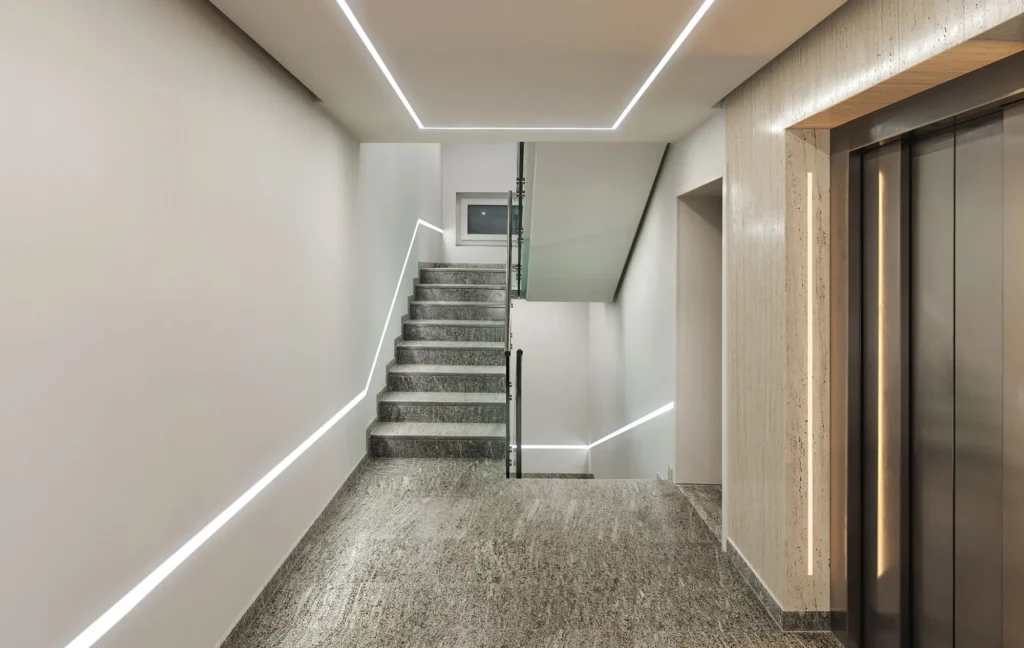
Fully Customizable – Sizes, Lengths, and Profile Options
LED linear lighting systems are highly customizable to suit different project requirements. Profiles are available in a range of widths and depths, from ultra-slim 12mm types to wide-body high-output versions. Standard lengths such as 600mm, 1200mm, or 1500mm can be freely combined or cut to fit exact spaces. Beyond size, clients can specify beam angles, diffuser types, color temperatures (2700K–6000K), and dimming protocols (0–10V, DALI, DMX). This level of flexibility makes linear lighting ideal for both standard fit-outs and high-end bespoke designs.
Additional Benefits – Efficiency, Longevity, and Light Quality
In addition to form and flexibility, LED linear lights offer excellent performance. They deliver high luminous efficacy (often over 120 lm/W), uniform light distribution, low glare, and long operating lifespans—typically over 50,000 hours. With high CRI options and flicker-free drivers, they are suitable for task lighting, display, and human-centric lighting applications alike.
How to Choose the Right Linear Lighting for Your Project
When selecting linear lighting, your approach depends on how clear your project requirements are. Below are two common scenarios:
For Engineering Projects with Drawings
If you already have lighting or architectural drawings, choosing linear lights becomes a precise matching process. Based on the layout, you’ll need to confirm the exact profile dimensions (e.g., 20mm x 35mm, or 50mm wide), fixture shapes (straight, L-shape, zigzag, ring, etc.), and installation methods (recessed, suspended, wall-mounted, or ceiling-to-wall-to-floor).
Beyond the structure, verify wattage per meter, color temperature (e.g., 3000K for warm ambiance or 4000K for office use), dimming protocol (0–10V, DALI, Triac), and surface treatment (white, black, anodized silver, or custom RAL color). A detailed spec match ensures design consistency and functional performance.
For Projects Without Drawings or Clear Requirements
If you’re still in the concept stage, it’s best to start by selecting the style of linear lighting that fits your design vision—do you need a slim profile, a bold architectural shape, or a custom form?
Next, choose the installation method based on ceiling and wall conditions. From there, finalize practical details like length, brightness, color temperature, and control type. Our team often recommends modular or customizable systems for such flexible needs.
At Signlite, we support both clearly specified projects and early-stage concept development. Whether you have a full set of drawings or just a design idea, we’ll help you choose the right profile, optical design, and control solution to fit your space.
Reach out to our team today for tailored recommendations or a fast project quote.
